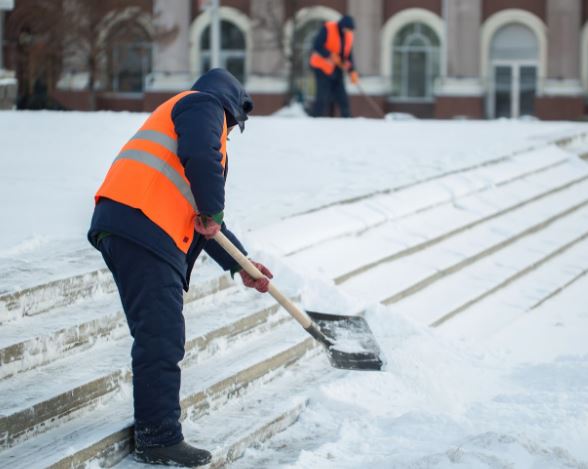Whether you look forward to the arctic chill or dread it more than death, winter comes every year. If your job calls you outdoors in the cold months, be aware that prolonged exposure to freezing or cold temperatures can lead to serious health problems, like trench foot, frostbite, and even hypothermia. That’s why it’s crucial for you to stay informed on the best ways to care for yourself while you’re on the clock.
Safety First
Health and safety experts at the Occupational Safety and Health Administration (OSHA) and the Centers for Disease Control and Prevention (CDC) develop tips and guidelines on how to help keep workers safe in their environments – including extreme cold temperatures. We’ve highlighted some key takeaways below for you!
Stay Safe When You’re Working in the Cold
- Know the symptoms of cold stress. When temps drop well below normal and wind increases, heat can leave your body rapidly. This can lead to serious health problems.
- Monitor your physical condition and that of your coworkers.
- Dress appropriately for the cold (see list below).
- Stay dry. Moisture – e.g. from sweat – can increase the rate of heat loss from your body.
- Keep extra clothing (including underwear) handy in case you get wet and need to change.
- Drink warm fluids.
- Per OSHA, use proper engineering controls, safe work practices, and personal protective equipment (PPE) provided by your employer.
- Include chemical hot packs in your first aid kit.
- Avoid touching cold metal surfaces with bare skin.
- Move into warm locations during breaks and limit the amount of time outside as much as possible.
Checklist for the Right Gear in Low Temps
- Wear at least three layers of loose fitting clothing. Keep in mind that tight clothing reduces blood circulation. Warm blood needs to be circulated to the extremities. Layering provides better insulation.
- An inner layer of wool, silk, or synthetic can keep moisture away from the body. Thermal wear, wool, silk, or polypropylene, inner layers of clothing will hold more body heat than cotton.
- A middle layer of wool or synthetic can provide insulation even when wet.
- An outer wind and rain protection layer that allows some ventilation to prevent overheating
- Insulated coat or jacket (water-resistant if necessary)
- Knit mask to cover face and mouth (if needed)
- Hat that will cover your ears as well. Hats reduce the amount of body heat that escapes from your head; wearing one will help keep your whole body warmer
- Insulated gloves (water-resistant if necessary)
- Insulated and waterproof boots. Add a layer of cold weather socks for even more protection.
Find all of the winter gear you need to keep you safe and warm this season at Working Person’s Store.




